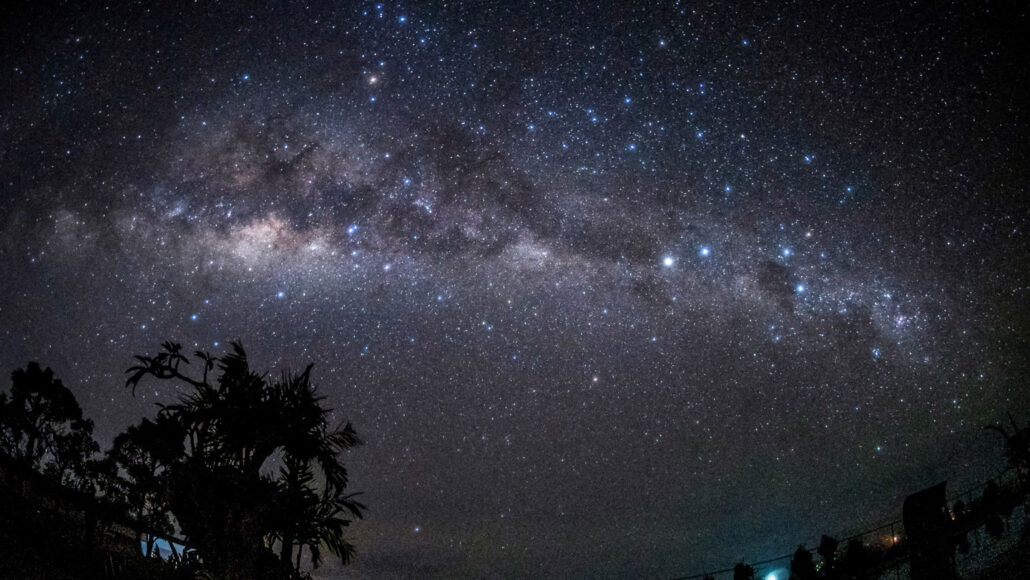Let’s learn about the Milky Way
This is the galaxy where the Earth orbits the sun

All the stars we see in our night sky are part of our Milky Way galaxy. But because the Milky Way is shaped like a disk, we see a brighter concentration of stars in a flat band.
DICKY BISINGLASI/Contributor/Getty Images
Listen to this story:
Have feedback on the audio version of this story? Let us know!
The Milky Way galaxy is our cosmic home sweet home. It’s the massive bunch of stars, gas and dust where Earth orbits the sun. In illustrations, our home galaxy is often shown as a huge pinwheel of stars — and that’s certainly part of the picture. As a large spiral galaxy, much of the Milky Way’s matter is packed into a disk about 100,000 light-years across. But the Milky Way is no simple stellar pancake. And charting the details of the galaxy’s structure can offer clues about its unique history.
For instance, recent data hint that the Milky Way’s disk is not totally flat. Rather, it is warped like a potato chip. Some ripples at the galaxy’s outer edges were likely kicked up by a smaller galaxy running into the Milky Way long ago.
What’s more, the disk of the Milky Way is sandwiched between two huge blobs of gas. The origins of these “Fermi bubbles,” which are each about 25,000 light-years tall, remain mysterious. But they may have been blasted out by activity near the supermassive black hole at the center of the Milky Way. That dense core weighs as much as 4 million suns and frantically sucks up surrounding material.
Most of the matter in the Milky Way, though, doesn’t lie in the galaxy’s disk at all. Instead, it lurks in a roughly spherical “halo” that surrounds the spiral. Most of that halo is made up of dark matter. (This invisible stuff makes up most of the matter in the universe.) Though it cannot be seen directly, dark matter in the Milky Way’s halo gravitationally pulls on the galaxy’s visible stars. The Milky Way’s halo is also dotted with stars made of normal matter. These may have been snagged from other galaxies that got too close.
Want to know more? We’ve got some stories to get you started:
The Milky Way is shaped like a curvy potato chip Cepheid stars help scientists trace the galaxy’s warped structure. (8/21/2019) Readability: 7.4
Ghost particles paint a new picture of the Milky Way The new map is the first of our galaxy to be made without light. (8/2/2023) Readability: 7.5
Spotted: Milky Way’s giant gas bubbles in visible light They’re called Fermi bubbles and a new technique could map how fast they move. (7/16/2023) Readability: 6.5
Explore more
Wild art? No, it’s a radio image of the heart of our Milky Way
Caught: A ghost galaxy that may have hit ours long ago
Spin in this Milky Way bar may show cosmic dark matter does exist
We finally have an image of the black hole at the heart of our galaxy
The Milky Way’s ‘yellowballs’ are clusters of baby stars
Milky Way’s tidal forces are shredding a nearby star cluster
Cool Job: Making stellar connections
Activities
Volunteers with the Milky Way Project sort infrared observations of our galaxy taken by the Spitzer Space Telescope. Citizen scientists on this project first spotted mysterious “yellowballs” in our galaxy. Those objects turned out to be clusters of baby stars.







